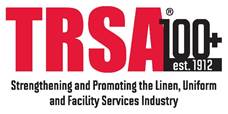
TRSA is launching a plant-based Safety & Health Certification (S&H). The S&H was created by the TRSA Safety Committee to help laundry facilities create a culture of safety that provides a return on investment by increasing productivity and engagement while reducing injuries, absenteeism and workers’ compensation costs.
“The S&H certification process of internal evaluation, application, inspection and improvement provides laundries with a path toward continuous improvement,” said Joseph Ricci, CAE, president & CEO, TRSA. “It offers a path toward employee engagement that helps organizations create a culture of safety.”
Laundries earning the TRSA S&H Certification have demonstrated best quality management practices verified by an independent, third-party inspection process. Modeled on the OSHA Voluntary Protection Program (VPP) guidelines, prerequisites for obtaining the S&H certification include:
· Protocols and compliance for workplace and worker safety (PPE, ergonomics, proper training on tools and equipment, access to First Aid, etc.)
· Prioritizing an environment that benefits workers and results in increased productivity and worker satisfaction
· Creating opportunities for increased plant output by minimizing equipment downtime
· Increasing plant bottom line through reduced Workers’ Comp premiums and avoidance of the costs associated with worker injury/equipment malfunction
· Identifying hazards that could be cause for citations or fines during formal OSHA inspections
· Empowering employee safety training and input on solutions to issues that may be plant-specific
In addition, earning the S&H Certification also includes implementation of an effective OSHA recordkeeping program and two-years OSHA TRIR (total recordable incident rate) that are less than or equal to the Bureau of Labor Statistics annual report. Interested laundries should download and review the TRSA S&H Standard at www.trsa.org/certification and follow up procedures provided at that site.
Obtaining a culture of safety, organizations documented:
· 70% fewer employee safety incidents
· 41% lower absenteeism
· 40% fewer quality defects
· 21% higher profitability
· 20% higher sales
· 17% higher productivity
· 10% higher customer satisfaction
*Source: Gallup 2017 report, State of the American Worker













